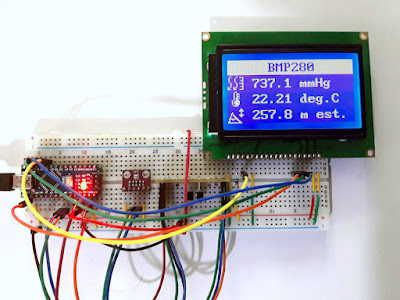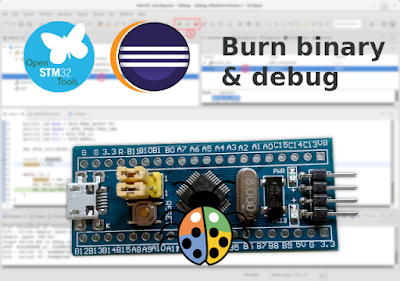BMP280 is a digital air pressure sensor especially designed for mobile applications. It is a very small device, having a footprint of 2 by 2.5 millimeters. Interfacing with a development board would be difficult if breakout boards wouldn't exist. Even so, there's another issue: sensor's nominal voltage is 1.8 V. Fortunately, it can handle 3.3 volts. BMP280 can measure atmospheric pressure and temperature. Since there is a correlation between pressure and altitude, the latter can be estimated.
I ended up wiring this sensor to a 5 V development board because of the display. Pressure, temperature and altitude required 3 rows, so I used my ST7920 graphic LCD. Although this controller works at 3.3V, the way my display is hardwired by manufacturer does not because you cannot increase contrast enough. I connected the display in SPI mode, so only 4 wires are used (3 for SPI and 1 is reset). The BMP280 supports either SPI or I2C interface. Because the only level shifter I have is one I built a while ago for I2C, this is the protocol I wrote the code for.

The BMP280 sensor on the breadboard






